I’m not exactly sure how it all started, but it’s becoming somewhat of an annual tradition for me to sit down and watch the entire Ice Pilots TV series from beginning to end each spring. It usually takes about a month to get through all six seasons, and I always walk away from it feeling like I want (need) to create templates of vintage aircraft. Especially the Douglas DC-4.
Anyway, I finished my annual binge in early June, and since then, I’ve been working on the DC-4 side view templates you see below. It was fun. And incredibly frustrating.
Douglas DC-4 blank illustration templates
I’ve never been a very big fan of vintage “piston pounders”, but the DC-4 speaks to me in ways that are hard to put into words. Not only does it look great, it’s an incredibly nice-sounding airplane. I’ll bet it smells really good too, but unfortunately, I’ve never seen one up close. Not yet anyway.
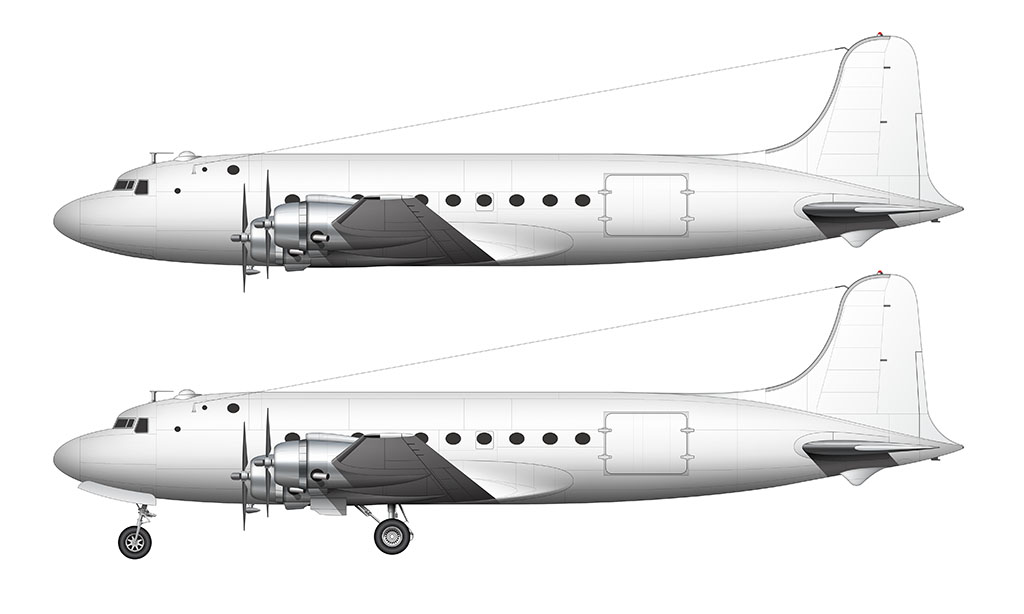
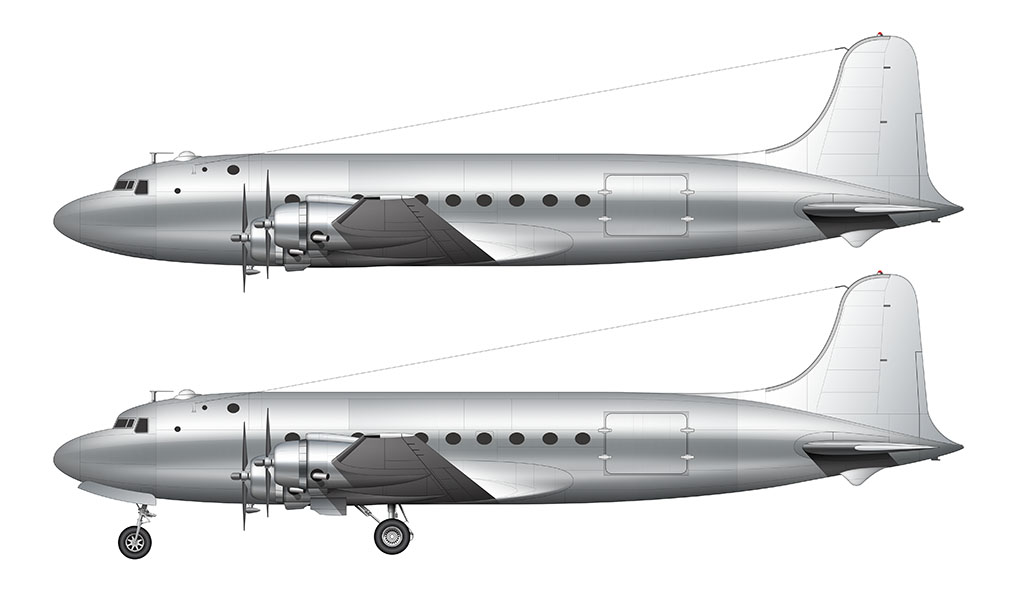
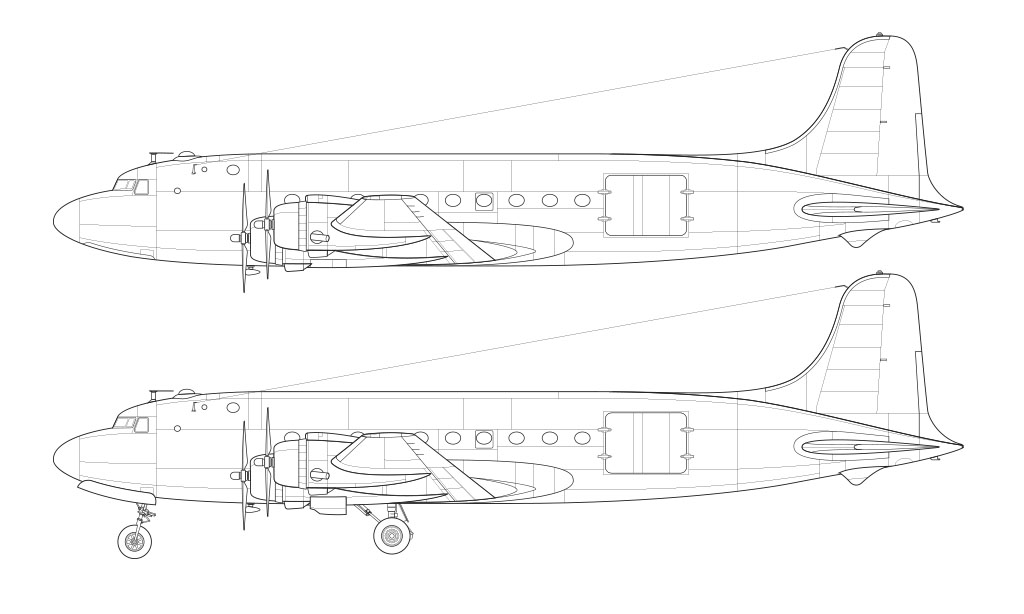

Vintage aircraft are extremely difficult to create templates for (a lesson I learned when creating my Boeing 707 templates). Good reference photos are hard to come by, and it seems nobody thought to take perfectly side-on pics of these old birds back in the day.
I did what I could though, and I hope you find the above illustrations useful.
What exactly is a Douglas DC-4?
The Douglas DC-4 was a highly-versatile aircraft developed by the Douglas Aircraft Company in the late 1930’s. It was a propeller-driven aircraft that the company had built primarily for commercial purposes, but proved to be a capable transport aircraft for the military during World War II.
The DC-4 had a simple autopilot system that provided altitude and directional hold. It weighed approximately 73,000 lbs and had a range of 4,200 miles.
- The most common configuration consisted of 44 passenger seats
- It had a top speed of 215 mph
- It had wingspan of 118 feet, was 94 ft long, and 28 ft tall.
- It was introduced into commercial service in 1942 with United Airlines
- It was powered by four Pratt and Whitney R-2000 Twin Wasp engines. These engines were twin-row radial 14-cylinders with air-cooling and Stromberg carburetor fuel systems.
How does the DC-4 compare to a DC-3?
The DC-4 had twice the payload capacity of the DC-3. Honestly though? You wouldn’t even know it just by comparing these templates to my DC-3 templates. They look very similar in size.
The biggest difference is that it was powered by four radial (piston) engines instead of the DC-3’s two engines.
From the onset, the goal was to develop the DC-4 as the natural successor to the DC-3. Airlines demanded larger and faster equipment, so Douglas poured $3 million into the development of an all-new aircraft which extended the capabilities of the DC-3. The DC-4 was their first four-engine, 42 passenger commercial airliner ever built.
Range is also a big difference. The DC-3 was capable of flying 1,491 miles nonstop, while the DC-4 could fly 4,200 miles.
Interesting facts about the DC-4
The DC-4 was a remarkable airliner that went down in history as one of the best (in my opinion anyway). It was a highly versatile aircraft that paved the way for the aircraft we still fly on today. Here are some other interesting facts about the amazing DC-4:
- Before the DC-4 was created, the Douglas Aircraft Company manufactured a four-engine aircraft in 1938 that was almost twice as big than the DC-3. It was called the DC-4E.
- The E in DC-4E stood for “experimental.”
- The Douglas Aircraft Company built the DC-4E with the capacity to carry 42 passengers for daytime flights (and 30 for overnight flights). The aircraft featured very comfortable sleeping accommodations, which included a secluded bridal room.
- On June 7, 1938, the DC-4E prototype flew from CloverField in Santa Monica, California. It was piloted by Carl Cover.
- Testing issues delayed the approval of the Type Certificate until May 5, 1939.
- In 1939, the Imperial Japanese Airways acquired a DC-4E for secret evaluation and transfer of technology.
- That particular DC-4E aircraft crashed in Tokyo Bay, killing top military generals.
- The DC-4E was ultimately reverse-engineered by the Japanese to become the foundation for their Nakajima G5N bomber.
- At the end of the Second World War, the US military released over 300 DC-4 transport aircraft for civilian use.
- A DC-4 was the setting for the popular movie The High and The Mighty starring John Wayne.
- The DC-4 was the first aircraft to carry fuel tanks in the wings, to make use of a one-piece fuselage, and it was the first to use completely-retractable tricycle landing wheels.
- Military versions of the DC-4 were called C-54 Skymaster and R5D.
- The first C-54 variation flew from CloverField in Santa Monica, California on February 14, 1942.
- To meet strict military regulations, the first production C-54 military aircraft had four extra auxiliary fuel tanks in the central cabin. This reduced the number of passenger seats to 26.
- Between January 1946 and August 9, 1947, the Douglas Aircraft Company produced 79 new-build DC-4s. The last was delivered to South African Airways.

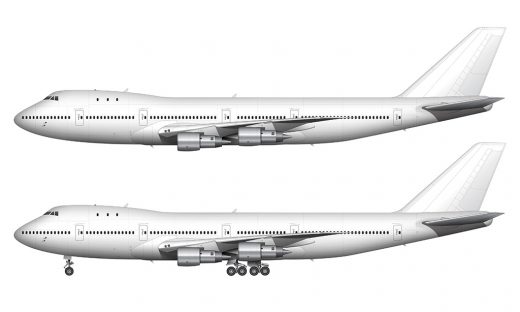
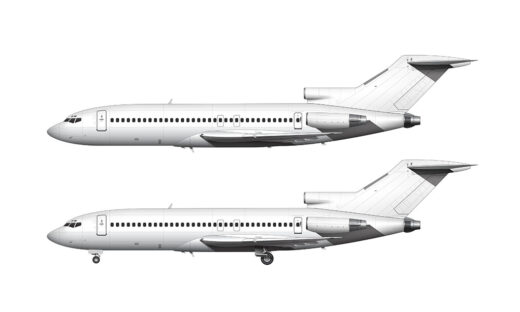
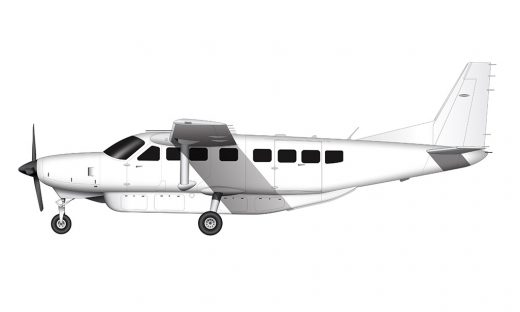
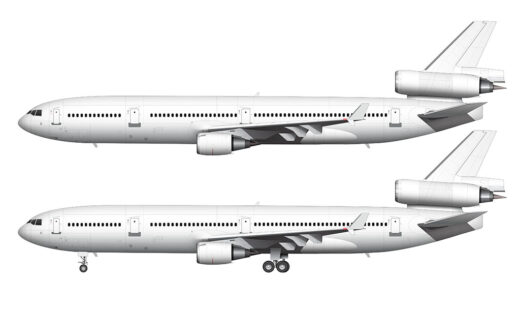

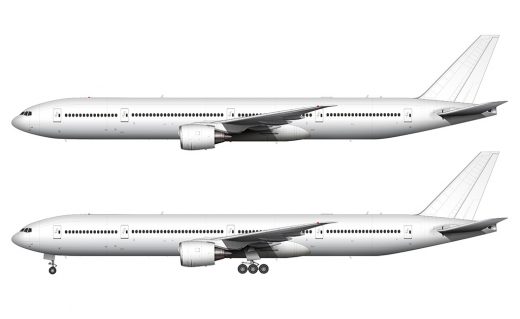
This is fantastic! I am excited to see future “classics” such as the DC-6/7, Constellation, Martin 4-0-4 etc…. I would LOVE to see a middle ground offered for your amazing work where you “package” deal aircraft families… a single price for the source files for the 737, DC-9’s, etc…
Thanks Chris! Absolutely – I am planning on getting to all the most significant classics eventually. The Constellation and Electra are at the top of my list at the moment. Anyway, do be sure to subscribe to my email newsletter if you aren’t already. I will be offering discounts for my high-res templates on occasion (it will be the only place I’ll announce those special deals).
This is very cool, I really love that you are starting to do some old aircraft. But can you make some special aircraft like the Airbus Beluga or Boeing Dreamlifter?
Thanks! Yes, I have considered doing those two in the past, but I haven’t yet because I’m not sure how useful they would be. If there’s a real demand for these I will definitely do them!
Yes! This is a very good template we have here, great job Scott! Would make sense if you done the DC-3 next.
Thank you! Yes, the DC-3 is on my short-list.
🙂
very good squad, when is ilyushin il 96 going to be there?
I’m working on the Learjet 45 right now, but maybe after that!
I would love to see more Soviet aircraft (IL-86/96/62, Tu-204/154 etc.)
Looks awesome! Love the older aircraft.
I’d love to see a Twin Otter if that’s on your list – especially with the big chonky tundra tyres.
Keep up the great work <3
Thanks Elisabeth! I hadn’t considered the Twin Otter yet – but the chonky tires thing makes it tempting. Haha! I’ll add it to my to-do list…
Can you PLEASE make a B377 Stratocruiser i would love to see this icon of post WW2 aviation
That’s a request I haven’t had yet! Sounds like a fun one to do, but I’ve got other templates I need to get to first.
Lockheed L-188 Electra 😉
That one is near the top of my to do list! I just need to find the time to start doing templates again…
I’m probably the only one who wants it, but I would love to see the DC-4 Carvair conversion. Other piston airliners people probably really want (including me) are the DC-3, and L-049 Constellation.
Yeah, the DC-3 is one of my most common requests at the moment. I really need to get that one done!